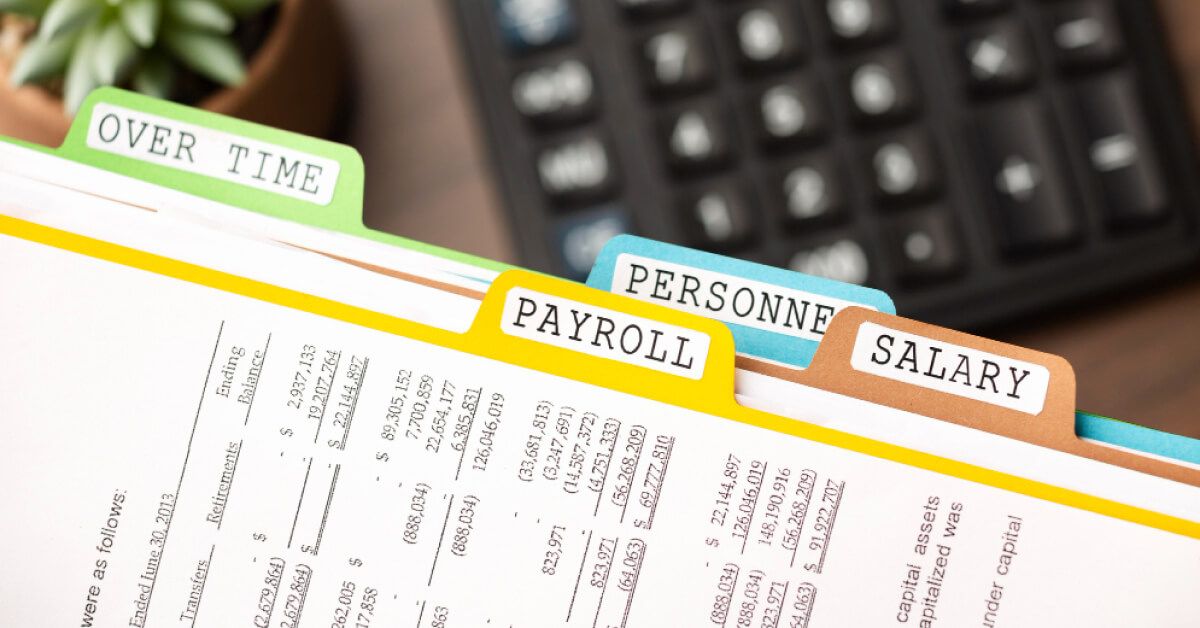Payroll checklist made simple: What to do before, during, and after payroll

Imagine you're preparing for a big event—let’s say a wedding. The months leading up to the big day are filled with decisions, tasks, and deadlines.
You carefully coordinate everything: from sending invitations to picking the flowers, arranging transportation, and finalizing the seating chart. But even with all the planning, one little oversight, like missing a vendor or miscommunication, can create a ripple effect that affects the entire event.
It’s the same with payroll. The smallest mistake can cause disruption, whether it’s missing a tax form or failing to account for an employee’s overtime. Just like you wouldn't risk your wedding day without double-checking every detail, you shouldn't approach payroll without a comprehensive checklist.
Ensuring accuracy in every step makes sure that everything flows seamlessly, leaving your employees happy and your business in the clear. Let’s dive into how you can avoid any surprises and make your payroll process just as smooth as your best-planned event.
What is a payroll checklist and why do you need one?

A payroll checklist is a step-by-step guide that outlines everything you need to do before, during, and after running payroll to ensure accuracy, compliance, and timely payments. It helps businesses stay compliant with tax laws, track employee information, and handle payroll processes efficiently across each calendar year, minimizing mistakes and legal risks.
Without a proper payroll checklist, even a simple payroll plan can spiral into chaos. From verifying employee information and collecting tax forms, to calculating payroll taxes and coordinating with your payroll provider, every step matters. Following a payroll checklist template ensures you handle benefits deductions, record hours worked, and finalize employee earnings without missing crucial details.
Plus, in an environment where payroll compliance checklist requirements are tighter than ever, a structured approach protects your business against costly errors with federal and state tax authorities. It also helps streamline your payroll processes for the upcoming year, considering new regulations like salary threshold changes and updates to the fair labor standards act.
How a payroll checklist improves accuracy, compliance, and efficiency?

Managing payroll is never just about getting employees paid; it’s about ensuring every box is checked, every law is respected, and every report is complete. A payroll checklist acts as a safeguard for businesses, ensuring payroll processes are consistently accurate, fully compliant, and highly efficient across every calendar year. Here's how it makes a real impact:
- Improves accuracy with clear workflows: A payroll checklist helps organize payroll processes from verifying employee information and tax forms to recording hours worked and calculating payroll taxes. This prevents common errors that could lead to incorrect employee earnings or missed benefits deductions.
- Strengthens compliance with federal and state laws: Including a payroll compliance checklist ensures you meet requirements like the fair labor standards act, federal income tax obligations, and affordable care act reporting. This reduces risks related to taxes, legal issues, and penalties from tax authorities.
- Streamlines efficiency across payroll processes: By following a payroll processing checklist, businesses can close payroll tasks faster, track payments, file tax forms, and manage final payroll duties without wasting time or duplicating effort—keeping business operations smooth throughout the current year and upcoming year.
- Ensures complete record-keeping for year end: A detailed checklist ensures accurate payroll records, year-end payroll reports, and final payroll adjustments. Properly managing year end payroll helps companies address social security, report gross receipts, and prepare for the following calendar year without rushing last-minute.
- Reduces risks tied to benefits and deductions: Tracking flexible spending accounts, retirement plans, and unused benefits using a payroll checklist ensures that both full time employees and independent contractors receive accurate payments, supporting both employee satisfaction and business compliance under the affordable care act.
Who should use a payroll checklist?
A payroll checklist isn’t just a "nice-to-have" tool—it’s a critical part of keeping payroll processes, employee payments, and tax obligations on track. Whether you’re running a small business or leading a large organization, the responsibility to stay compliant and deliver accurate payroll falls on several key roles. Here’s who benefits the most:
- HR teams: Ensuring smooth onboarding and compliance: HR is responsible for collecting employee information, verifying social security numbers, managing tax forms, and tracking benefits deductions like flexible spending accounts. Using a payroll checklist ensures every new hire, exempt employees, and independent contractors are properly set up for payroll and benefits, without missing compliance with federal and company policies. As part of the verification process, it's essential to match SSN and last name to ensure accurate reporting and avoid discrepancies with government records.
- Finance departments: Managing payroll taxes and reports: Finance teams must accurately calculate payroll taxes, file year end payroll reports, handle final payroll, and ensure proper delivery methods for payments. A payroll checklist helps them file federal income tax, address gross receipts, and manage taxes for the current year and upcoming year without missing deadlines or facing fines from tax authorities.
- Business owners: Overseeing payroll processes and legal compliance: Business owners, especially in small to mid-sized businesses, must make sure payroll processes are followed correctly to protect the company's economic security and stay compliant with the affordable care act, fair labor standards act, and salary threshold changes. A reliable payroll checklist helps verify employee earnings, closing payroll accurately, and file necessary reports payroll to social security and federal agencies.
Weekly vs. biweekly vs. monthly payroll: Does the checklist change?

The frequency of payroll cycles—whether weekly, biweekly, or monthly—does affect how you approach and organize your payroll checklist. While the core payroll processes stay the same, the level of preparation, verification, and reporting needs slight adjustments depending on the payroll schedule your company follows. Here’s how the checklist adapts:
- Weekly payroll: Faster cycles, tighter verification: When running weekly payroll, businesses must verify employee information, calculate payroll taxes, and track hours worked more frequently. Weekly schedules require extra attention to timely tax forms filing, benefits deductions updates, and staying compliant with federal and fair labor standards act regulations to avoid errors in payments and reports payroll.
- Biweekly payroll: Balanced workload, consistent checks: With biweekly payroll, companies can align payroll processing checklist tasks more efficiently. There's a regular rhythm for collecting employee earnings data, calculating paid time off, and preparing necessary adjustments before final payroll submission. Finance teams must also maintain accurate payroll records and keep up with gross receipts and federal income tax reporting throughout the calendar year.
- Monthly payroll: Detailed audits, year end focus: Monthly payroll schedules offer more time between cycles, allowing deeper audits of payroll information, flexible spending accounts deductions, and salary threshold compliance. However, businesses must be extra vigilant about closing payroll, addressing social security contributions, and ensuring all tax forms and final payroll reports align properly for year end and following calendar year obligations.
Pre-payroll checklist: What to do before running payroll

Before you even start calculating payroll taxes or preparing final payroll reports, it’s important to get your pre-payroll checklist right. Skipping these early steps can cause serious payroll processes issues later, from misclassifying employees to incorrectly calculating paid time or bonuses. Here’s what businesses need to tackle first:
Confirm employee classification (FT, PT, contractor)
First, confirm whether individuals are full time employees, part-time workers, or independent contractors. Misclassifying workers can lead to serious compliance problems under the fair labor standards act and affordable care act. Verifying classifications ensures the correct payroll taxes, benefits deductions, and company policies apply. This step also helps businesses correctly file tax forms with federal and state tax authorities when preparing for year end payroll and year end payroll taxes.
Update timesheets and hours worked
Accurate payroll depends heavily on updated timesheets. Businesses must verify hours worked, overtime, and any flexible schedules, especially for non-exempt employees. Updating hours before payroll processing checklist tasks begin helps prevent disputes over employee earnings, supports fair paid time calculations, and ensures closing payroll activities are completed without errors, protecting the company's economic security.
Verify PTO, sick leave, and holiday pay
Before running payroll, double-check any accrued paid time off, sick leave, and holiday pay balances. Ensuring this data is current supports compliance with company policies and state laws. It also helps businesses file accurate payroll records and tax forms during the current year and upcoming year, ensuring that benefits deductions and unused benefits are calculated correctly for both gross receipts and social security contributions.
Check for bonuses, commissions, or deductions
Finally, review any bonuses, commissions, or special deductions that need to be included in the payroll cycle. These adjustments must be reported properly in reports payroll and tax forms for tax purposes. Missing these updates can lead to inaccurate employee's income reporting, incorrect payroll taxes calculations, and problems when preparing year end payroll reports for the following calendar year.
Payroll processing checklist: Step-by-step

Once the pre-payroll tasks are complete, it’s time to dive into the payroll processing checklist. Getting this stage right means your business can stay compliant, avoid tax penalties, and ensure employees are paid accurately and on time. Every payroll cycle — whether for the current year or upcoming year — demands close attention to every payroll process. Here’s the breakdown:
Input data into payroll system
Start by entering all employee information into your payroll software accurately. This includes verifying the latest tax forms, social security numbers, hours worked, and benefits deductions. Incorrect data entry can cause serious problems with final payroll, impact federal income tax filings, and create discrepancies in year end payroll reports required by tax authorities.
Calculate gross pay
Next, calculate each employee's gross pay based on hours worked, agreed salaries, or commissions. Be mindful of salary threshold and salary threshold changes affecting exempt employees. Accurate gross receipts reporting is crucial, especially when handling full time employees and independent contractors who require different tax treatments under federal and state laws.
Apply deductions (taxes, insurance, retirement)
Apply all necessary deductions, including payroll taxes, insurance premiums, flexible spending accounts, and contributions toward retirement plans. Following a payroll compliance checklist helps ensure that deductions are correct for tax purposes and fully compliant with the affordable care act requirements. Also, ensure benefits deductions are up to date to avoid legal issues with company policies.
Calculate net pay
After deductions, calculate each employee’s net pay. Properly calculating net pay ensures that employees receive the right amount, and the business remains compliant with federal law, tax authorities, and payroll taxes regulations. Net pay accuracy also plays a critical role when you prepare reports payroll for year end and following calendar year audits.
Double-check totals for accuracy
Finally, double-check every total before proceeding to delivery method execution. Cross-verify employee earnings, payroll information, social security contributions, tax forms, and any final payroll adjustments. This step helps correct any errors, verify necessary adjustments, and guarantees the business stays ahead in maintaining compliance for the next year and beyond.
Post-payroll checklist: What to do after processing
The post-payroll checklist helps organizations cover every essential step to finalize the payroll processes for the current year and stay ahead for the upcoming year. Here’s what to focus on:
Distribute pay stubs
After final payroll is processed, it’s time to distribute pay stubs to employees. Each pay stub must reflect the employee's income, including gross pay, deductions like payroll taxes, benefits deductions, and net pay. If payroll discrepancies are discovered post-distribution, it's important to edit a paystub (the right way), using best practices to document the change and maintain compliance with employment laws.
Whether your delivery method is digital or physical, providing clear and accurate pay stubs not only supports company policies but also keeps your business in line with fair labor standards act requirements and the affordable care act regulations.
Submit tax payments to appropriate agencies
Once employee earnings are finalized, businesses must immediately submit payroll taxes to the appropriate federal, state, and local tax authorities. Missing these payments can lead to costly penalties, so it's crucial to stay compliant by filing payroll taxes on time, including federal income tax withholdings and social security contributions. Accurate tax payments also prepare businesses for year end payroll reporting and responsibilities tied to gross receipts and economic security.
File required forms
After paying taxes, businesses need to file all required tax forms like Form 941, state returns, and other federal filings. Filing these forms accurately is necessary for tax purposes and helps ensure that businesses stay compliant with the affordable care act, social security rules, and child support reporting requirements. Correct filing also plays a major role in preparing clean year end payroll reports and getting ready for the following calendar year and next year obligations.
Record payroll in accounting software
Finally, record all payroll information into your accounting software. Accurate record-keeping allows businesses to track payments, benefits, taxes, and deductions for full time employees, independent contractors, and exempt employees. Maintaining updated payroll records supports smooth audits, verifies gross receipts for tax authorities, and ensures that all data is prepared for closing payroll activities at year end and the start of the new year.
How to handle payroll for remote or hybrid teams

A strong payroll checklist ensures that every employee—no matter where they work—is paid accurately, and that your business stays compliant with federal, state, and company policies. Here's what to focus on:
- Understand multi-state tax obligations: Remote workers often trigger different payroll taxes depending on their location. Businesses must verify employee information, calculate proper federal income tax, and withhold the right amounts for each state. Proper filing of tax forms and payments to the correct tax authorities ensures compliance during the current year and sets you up well for the following calendar year.
- Update benefits based on location: Benefits deductions, flexible spending accounts, and retirement plans can vary based on state regulations. Make sure your payroll provider and payroll software are configured to handle benefits properly across different states, ensuring that year end payroll reports and affordable care act requirements are met without confusion.
- Track hours worked carefully: For hybrid employees, tracking hours worked is critical for fair paid time, overtime, and accurate employee earnings. Businesses must maintain thorough payroll records and verify all data before closing payroll, especially for non-exempt employees, to comply with the fair labor standards act and protect their economic security.
- Adjust company policies for remote teams: Organizations must revisit company policies around tax forms, benefits, and stock options to ensure they fit remote work realities. This step ensures businesses stay compliant under federal law, maintain accurate gross receipts reporting, and file correct reports payroll at year end and in the upcoming year.
Common payroll mistakes and how a checklist helps avoid them
Payroll mistakes can cost businesses more than just money—they can hurt employee trust, trigger legal issues, and invite audits from tax authorities. Using a payroll checklist acts like a safety net, helping organizations catch small errors before they turn into big problems. Here’s how the right checklist can protect your business and ensure your payroll processes stay on track:
- Misclassifying employees: Verify employee status early: Confusing independent contractors with full time employees can cause major tax purposes issues. A payroll checklist reminds businesses to verify employee information, apply the correct tax forms, and calculate payroll taxes based on the right classification according to the fair labor standards act and affordable care act.
- Incorrect tax withholdings: Double-check deductions: Failing to withhold proper federal income tax, social security contributions, or payroll taxes can lead to penalties. Following a payroll compliance checklist ensures that deductions for flexible spending accounts, retirement plans, and benefits deductions are correct, keeping the business in good standing with federal tax authorities throughout the calendar year.
- Missing year-end filings: Plan ahead for reports: Skipping or rushing year end payroll filings, such as year-end payroll reports and final payroll documentation, can cause delays and fines. A detailed checklist ensures businesses file the correct tax forms, close payroll accurately, report gross receipts, and prepare payroll information needed for the following calendar year and next year.
- Overlooking paid time and benefits: Track everything: Forgetting to calculate paid time off, unused benefits, stock options, or child support deductions can impact employee earnings and compliance. A payroll checklist ensures that hours worked, benefits deductions, and necessary ad
How employee feedback surveys help you identify payroll issues before they escalate

When payroll issues go unnoticed, they don't just affect employees' income—they chip away at trust, morale, and engagement. Employee feedback surveys are a simple yet powerful tool for spotting payroll problems early, allowing businesses to correct them before they turn into larger compliance or retention challenges.
- Spot recurring payroll errors: Employees often notice inconsistencies in their pay, benefits deductions, or hours worked before the payroll team does. Regular surveys create a channel for employees to report such issues quickly and confidentially.
- Understand benefit-related concerns: Surveys can highlight confusion or dissatisfaction around flexible spending accounts, retirement plans, or stock options, allowing HR teams to verify benefits data and ensure payroll processes align with company policies and affordable care act requirements.
- Identify gaps in communication: Sometimes, payroll issues stem from unclear communication about paid time policies, final payroll processes, or tax forms filing. Surveys give employees the opportunity to express where they feel misinformed, helping the business adjust communications before problems escalate.
- Boost year end payroll readiness: Early feedback during the calendar year helps identify tax-related discrepancies or missed social security deductions, making it easier for businesses to prepare accurate year end payroll reports and stay compliant with federal tax authorities.
Summary
Conclusion
After all the forms filed, deductions calculated, and payroll processes checked off, what really holds everything together is trust—between your employees, your finance teams, and your leadership. A reliable payroll checklist makes that trust visible in every accurate payment and every on-time report filed with tax authorities.
It's not just about compliance with federal laws or wrapping up year end payroll smoothly; it’s about building an organization where small cracks don’t turn into wide gaps.
But here’s something seasoned employers know: even the best processes need human insight. Employee feedback often surfaces issues long before reports payroll show discrepancies. Platforms like CultureMonkey help organizations listen in real-time, catch problems early, and create an environment where employees feel their voices matter—not just their paychecks.
Payroll might seem like numbers and deadlines on the surface, but behind every transaction is a person relying on you to get it right. Pairing a strong payroll checklist with active listening through tools like CultureMonkey means you’re not just ticking boxes—you’re strengthening your company’s foundation for the following year, the next year, and every calendar year to come.
FAQs
1. What are the five basic steps of payroll?
The five basic steps of payroll are collecting employee information, calculating gross pay, applying payroll taxes and deductions, distributing payments, and filing necessary tax forms. No matter the business size, following these steps ensures compliance and smooth operations. Referring to payroll examples regularly is a best practice to catch common mistakes early and stay ready for the upcoming new calendar year.
2. How to audit a payroll checklist?
To audit a payroll checklist effectively, businesses should review employee classifications, verify deductions, cross-check benefits deductions, and confirm final payroll totals. It’s also smart to review any adjustments made during special periods like receiving coronavirus aid, ensuring compliance was maintained. Performing audits thoroughly ahead of the new calendar year is considered a best practice to avoid last-minute surprises.
3. How often should payroll be reviewed for accuracy?
Payroll should be reviewed after every processing cycle to ensure immediate accuracy, but a full audit should be scheduled quarterly and at year end. As business size grows, increasing review frequency becomes a best practice. This is especially important after significant changes such as shifts in employee counts or benefits programs, helping businesses stay prepared for a seamless new calendar year.
4. What payroll tasks are commonly missed without a checklist?
Without a checklist, businesses often forget to update benefits deductions, apply correct tax forms, or finalize paid time adjustments. These mistakes can affect employee earnings and tax reporting. Reviewing payroll examples helps teams recognize missing tasks. Staying organized ensures businesses meet tax obligations correctly, avoiding risks that could disrupt planning for the new calendar year and smooth payroll processes.
5. Is it better to use payroll software or manage checklists manually?
For growing organizations, payroll software is a smarter choice compared to manual checklists. It automates calculations, tax submissions, and benefits tracking, adapting well as business size increases. After government programs like coronavirus aid impacted payroll reporting, digital systems helped many businesses maintain compliance. Using a combination of reliable payroll software and checklists ensures smoother transitions into the new calendar year.



